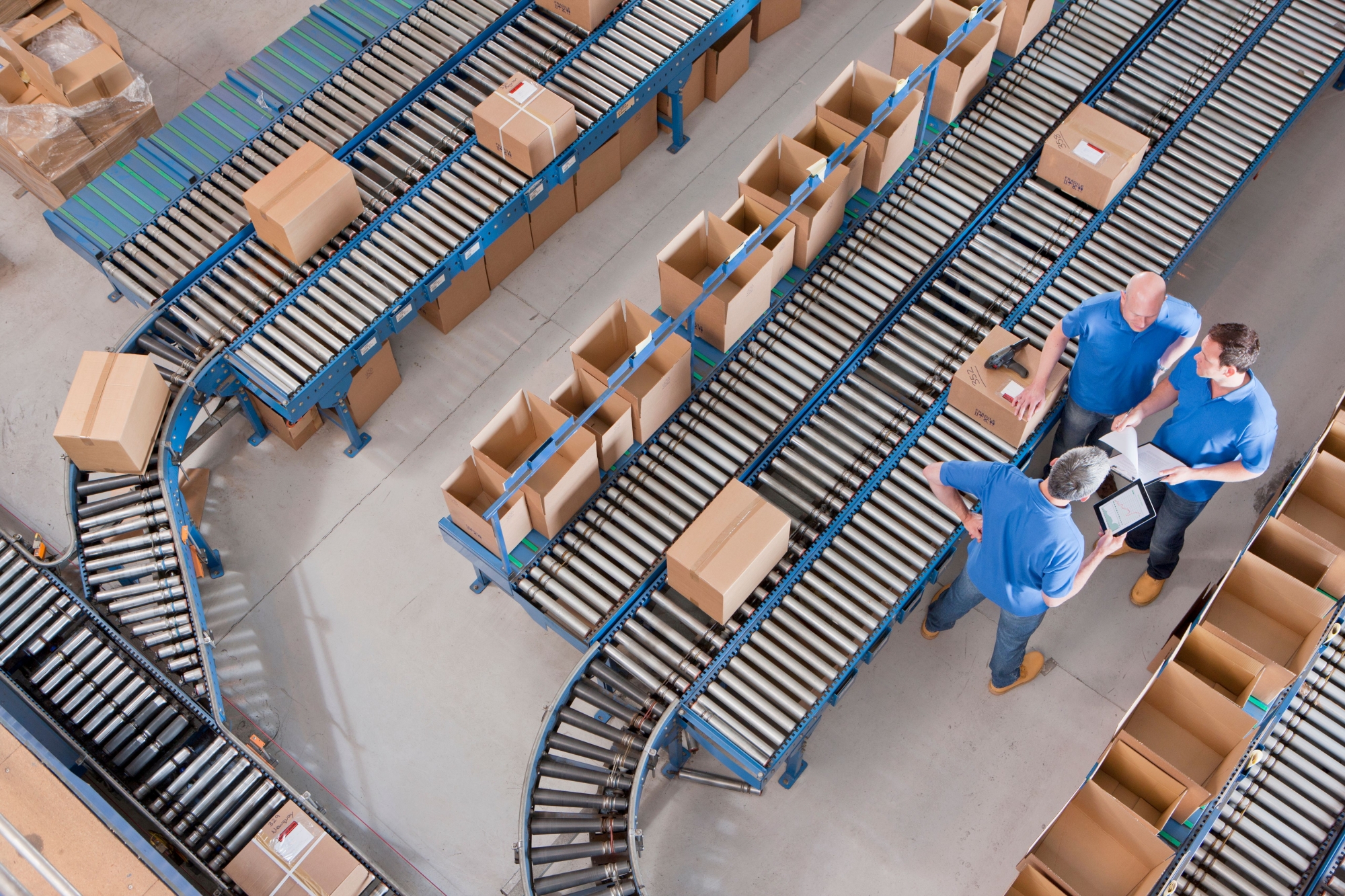
Calmness, regularity and rhythm in the workplace
MetalRoxell Maldegem on the road to operational excellence.
Every manufacturing company strives for operational excellence. They are looking for
- calmness - through a smart process and a reliable production apparatus
- regularity - with accurate planning, with execution discipline, and
- rhythm - sharp task times.
Lean principles help to realise this ideal. In this article, we would like to zoom in on 2 levers that Roxell has started working with intensively:
- 5S, workplace organisation, striving for order & cleanliness, and
- LDMS - Lean Daily Management System, a visualised methodology for daily work meetings around operational performance.
Our guides are Filip Cauwels, Plant Manager, and Danny De Muynck, Operations Support Manager within Roxell.
Lever 1: 5S - workplace organisation, striving for order and cleanliness
This methodology describes in 5 steps how to make and keep the workplace orderly, clean and safe in a standardised way. You do this together with the employees who use the workplace. The strength of this method lies in
- The process of involving everyone as much as possible in the organisation of the workshop, and
- The result: an orderly, clean, safe, productive and pleasant working environment.
For the management of Roxell it is clear: 5S is the basic condition for delivering and improving good quality. With 5S, you can see when something is going wrong. Organising and simplifying means reducing costs: saving time, saving space, improving the flow of goods. You prevent machine breakdowns and extend the lifespan of the installations. You avoid accidents, create a more pleasant working environment with a positive image towards customers and employees.
How did Roxell approach this? Within a favourable context (a well-looked-after workplace, an existing culture of systematic work), the employees could quickly identify with clean and orderly work. Standards were developed in pilot zones. Then the 5S method was rolled out step by step. In order to monitor progress and keep people motivated, tours are organised systematically. The operators do the tour themselves and are therefore more involved. They also intervene more quickly and matters are resolved. 5S within the pilot zones stimulated others to also get to work and start cleaning and painting (skipping steps in the 5S process). Sometimes, it was necessary to temporise in order to secure the process.
Lever 2: Lean Daily Management System (LDMS)
LDMS stands for daily communication about operational performance, actions and improvements through concrete and powerful visualisations. The backbone of LDMS is an active, workable visual board developed for the different zones. Next to the core headings (safety, quality, productivity...) the central space is free for internal communication. This central space has not been worked out in detail. Only general guidelines were given, such as: no e-mails in the free zone. The message is that the employees can fill in the rest themselves. Audits are also carried out on the functioning of the LDMS, the board, the consultation moments, the actions. This is in line with what CTB (the mother house) uses as a standard. A team has been put together to carry out LDMS checks. The checks are not only about the content of KPIs, but also about the way of working and presenting during the daily meeting.
Change, sometimes a tricky business
Danny Demuynck: "In the beginning, I didn't want to do that. I didn't feel like it. I literally said so to Filip (Cauwels) and Gino (Van Landuyt) ... What turned me around? Seeing that we got resources. I was not alone. The management was actually seriously involved.
Changing is difficult.
The past is a factor: change programmes that are insufficiently consolidated and that fade away, changing priorities, complex, corporate initiatives that do not take root, all these elements ensure that there is a great deal of scepticism about (yet another) new change programme. Managers, supervisors and team leaders also appear to be reticent. It took a lot of effort to turn this around: organising work sessions, providing training, talking to people, convincing them. Management support is very important here. Sustained management attention ensures that the initiatives are embedded in the own business processes.
Moreover, LDMS and 5S are also corporate driven:
- Everyone really feels that there is a focus on them. Now there is specific reporting to do. Objectives have been formulated and there is a monthly follow-up on the status of 5S and LDMS. The local management is also very involved.
- This reporting is also the basis for communication with the employees.
- The implementation takes place at all sites around the world.
- At the same time, there is local freedom in the way the control elements are introduced. There is a local approach, with its own resources.
Implementing such a change remains a learning process. What would we do differently now? Filip Cauwels answers:
- Prioritise differently. It took a long time to define the zones. Three pilot zones were selected. Within those three zones, everyone was questioned: maintenance people, machine operators with a busy production schedule, project work and then 5S support. Only when one zone was brought into focus (Parts and Plastics) did things really start to move forward.
- With more people and resources from the start, speed would have been gained, also in support services, to create a bigger and faster momentum.
- Strengthening the team leaders. Actually, initially the idea was to have the LDMS meetings led by people from the department itself. And preferably not the team leaders. This did not work everywhere. In different zones the role has been given to team leaders anyway. For some this was a challenge: speaking in front of a group, making sure you prepare things in time, getting things right. People have gained more self-confidence. Standing in front of a group is not that easy, it can be intimidating. By doing it several times, being supported by the supervisor and making sure the atmosphere remains constructive, you see them grow.
Who is responsible for the ownership?
Filip Cauwels: "We mainly wanted to give ownership to the supervisors. With Danny, the coordinator, as a coach around the process. In the beginning there was some resistance to adding extra tasks such as 5S. The supervisors tried to put all their efforts into Danny. This was obviously not the intention. The supervisors were trained and went to work with their operators in the pilot zones. Despite the pursuit of standards, it was permitted that a department grew at its own pace and with its own intermediate steps. One department, for example, was already doing the labelling itself and did not wait for the templates that we developed. For 5S, operators increasingly took ownership. Because they do the rounds themselves, they are more involved and things are solved more quickly."
Maintaining momentum
Danny De Muynck: "Because of pressure on production and costs, efforts are being tempered somewhat today and 5S is temporarily running at a lower pace. At the same time, we have to make sure that we don't go backwards, that what has been implemented is maintained.
Tours: the 5S tours in the 8 zones will continue.
Audits: periodic audits keep things sharp. On average, 4 to 5 audits per month are organised, which means that every zone is visited again within 2 months. The audit team consists of the coordinator, the person in charge of the department, the plant manager, a person in charge from another department and, if possible, an operator. In terms of visibility, this can count. An audit always ends with a score and a list of points for attention that are discussed and tackled at the LDMS meeting.
How do operators experience this now?
Filip Cauwels: "You will still have persuaders, indifferent people and antagonists. But you do see a positive shift. Often it is employees with less connection to Roxell who are the least interested. Ultimately, it remains the task of every supervisor to actively involve all the operators, to recognise and value their ideas, to distribute the tasks and actions equally across the entire team, so that the story becomes everyone's story, and not that of a supervisor who actually wants to do it too well."
External support - The role of Stanwick.
In this story, Roxell has been able to call on external support. What is the added value of that? In the first place Stanwick brings "outside in": theoretical insights, the framework and practical experiences. Secondly, Stanwick helps with implementation. When the chemistry is right, the external party strengthens the message of the management. The urgency to really change increases when an outsider is involved. At the same time Stanwick teaches concrete change skills and can for example point out to the management the pitfall of too direct an involvement that might lead to micro-management and limit the ability of employees to regulate.
Results
We do not have hard figures, but we do know that the results are there:
- There is more communication. There is a lot of feedback from people, and problems are reported very quickly. Even though we have already made a lot of improvements, we are not always able to switch and solve problems very quickly. We have to make choices. The first priority is everything that revolves around safety. Here, it is mainly the maintenance department that is under pressure.
- There are better agreements about order and use of available space, and there are fewer conflicts about work materials to be shared. We lose less time looking for material that is now in its place.
- Discipline is increased. Structure and clear processes increase staff punctuality: the LDMS meeting is held immediately after a break and this ensures that everyone gets to the boards punctually.
- The employees grow. When employees notice that they are being listened to and that resources are being made available to improve things, their commitment immediately increases. You help them and they appreciate it. Investing when things are going well for the company also pays off in the periods when things are not going so well.




